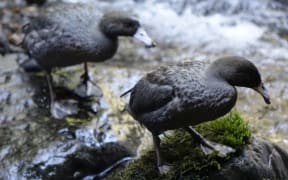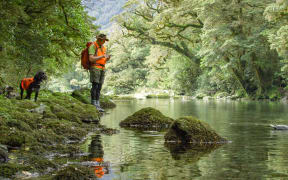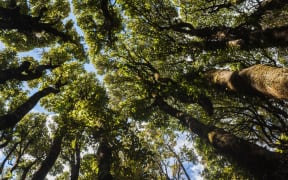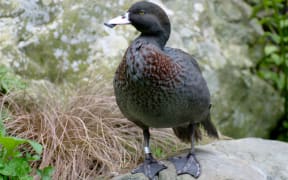"Functionally" extinct in Egmont National Park 20 years ago - the population of whio on Mt Taranaki has grown to such an extent that they are taking up residence outside the park, exposing them to new risks such as dogs.
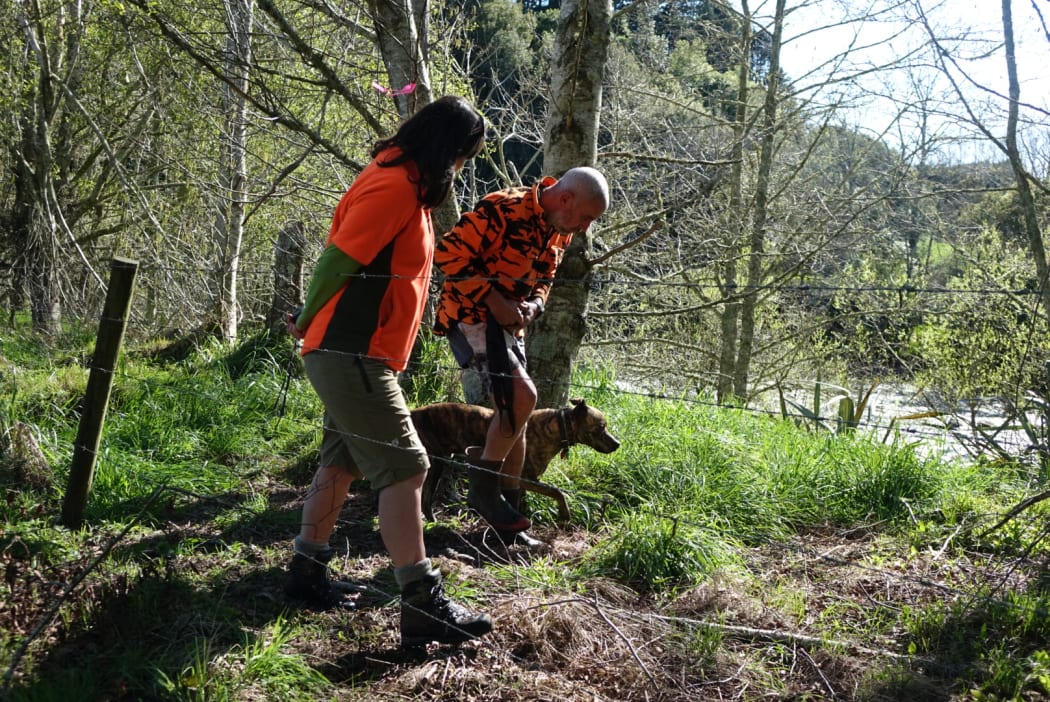
Jo Carson with Adrian John Mills and his dog Brownie Photo: RNZ / Robin Martin
In response, the Department of Conservation is offering Taranaki dog owners Blue Duck aversion training for the first time.
The whio, which adorns the New Zealand $10 note, is one of the country's rarest birds and there only about 2500 left in the wild - far less than kiwi - and about 200 in Egmont National Park.
Taranaki biodiversity ranger Jo Carson said whio were fiercely territorial and a pair needed about a kilometre of fast flowing river or stream to themselves.
"So these birds are starting to move outside of the park where there's no protection and as they start to do so it's introducing new hazards for them such as dogs, farm dogs, hunting dogs and we really want to try and pounce on that before it becomes a problem and get some dogs averted through training so they don't go near whio."
Ms Carson had set up a whio scent trail at Everett Park on the banks of the Manganui River near Inglewood for the aversion training.
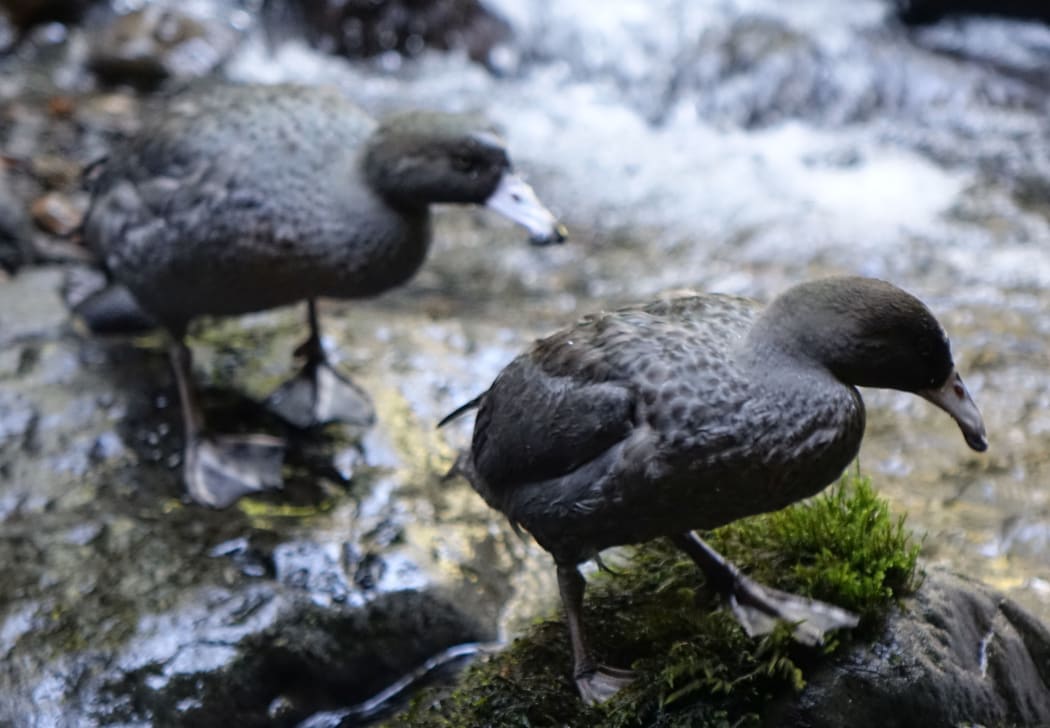
Two whio released onto Mt Taranaki in 2016. Photo: RNZ/Robin Martin
The dogs were fitted with a shock collar before being led through the trail which included three props - a freeze-dried bird, whio bedding and whio feathers.
She explained the process from there.
"The dog sniffs and shows interest in that whio and I hit the button so it seems that the whio has done it to the dog not me or its owner.
"The dog gives a bit of a yelp usually but it's all over in a split second. Then we walk on and get to the next prop and typically the dog will show really good aversion by going around that bird and then we've got another prop just to make sure as well."
Hawera farmer Adrian John Mills' work dog Brownie flew through without requiring a shock.
Mr Mills was putting three dogs through the training and was clear about why he was doing it.
"It's very similar to the pest control. This is my child's future. My six-year-old's future. It's what gets left in the bush."
One of his dogs got a couple of "belts" from the shock collar, but Mr Mills was okay with that.
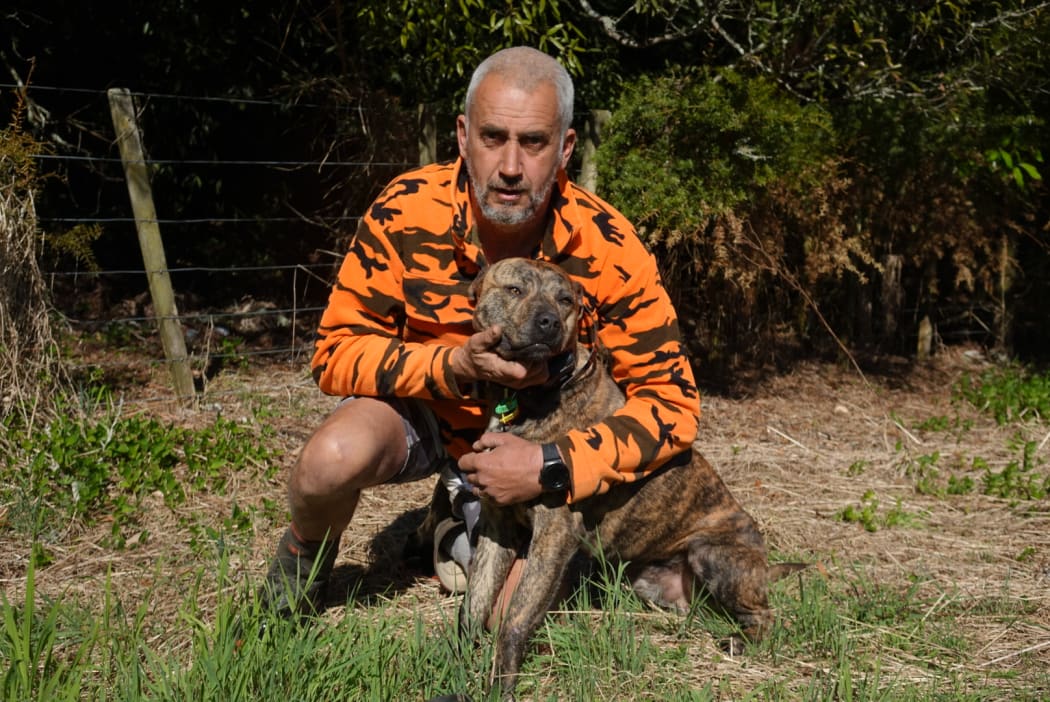
Adrian John Mills said his dog Brownie did not require a shock. Photo: RNZ / Robin Martin
"If it makes them understand that they are not allowed it. It's better than beating them as Jo said. If you don't beat them they don't shy away from you.
"So if you're correcting them with a shock collar they don't know where it came from. They think that animal gave it to them so they won't go near it in the future."
Greg Evans was another of the about 15 dog owners who took advantage of the training.
His charge Mack did not have Brownie's good judgement just yet and yelped loudly when the collar was activated.
The New Plymouth DOC worker said it sounded worse than it was.
"He's good as gold. That's what it's all about. It's just a little minor shock to remind them and he responded well.
"As you could see coming back he detoured around them [the props] and it really works."
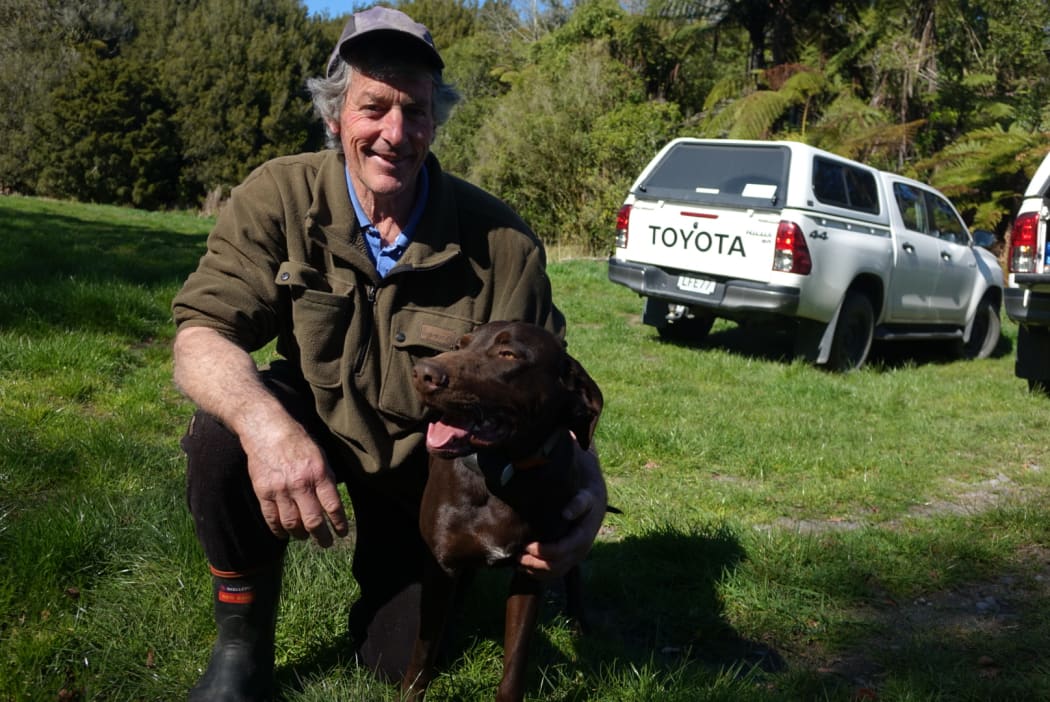
Greg Evans with his dog Mack, who did get a shock from his collar. Photo: RNZ / Robin Martin
Mr Evans said it was important for DOC staff to set an example.
"We do a bit of hunting for work so all of our dogs have got to be done for that and I also do a bit of hunting in my spare time and one of the areas I hunt in there are kiwi so all the pig dogs are done too.
"And it's a good look for us and it encourages other hunters to come in and get onboard with it. And it shows the general public hunters are trying."
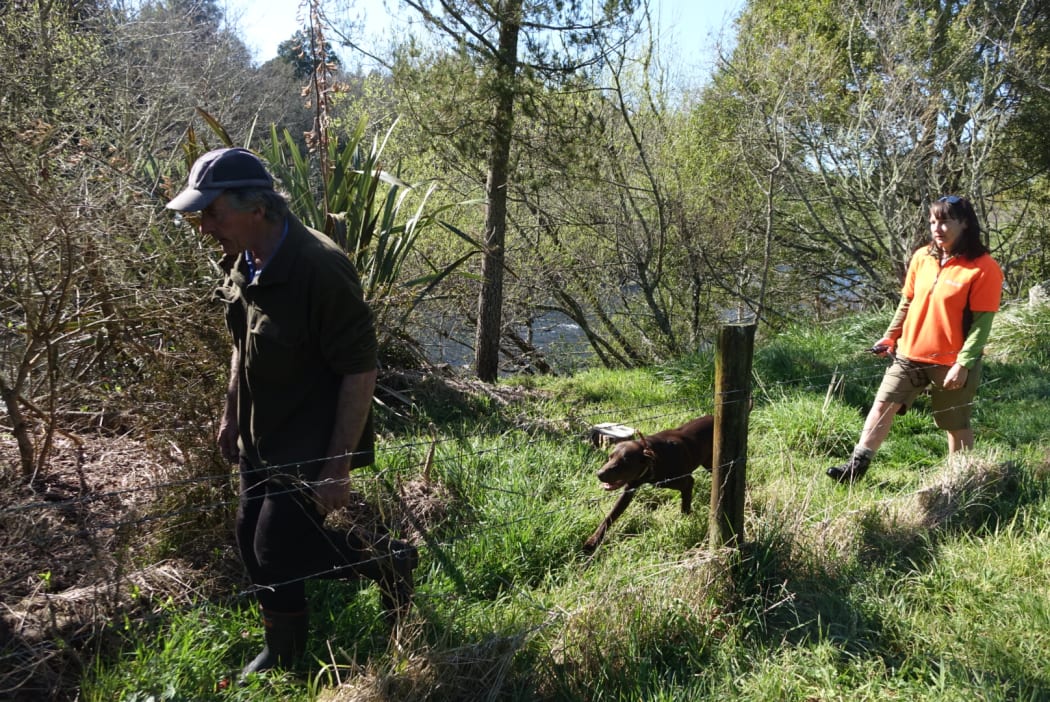
Greg Evans, Mack and Jo Carson Photo: RNZ / Robin Martin
Meanwhile, Ms Carson said with continued riparian planting and improvements in water quality Taranaki could support a whio population of up to 100 - a boon for everyone.
"There's something about them that when people see them for the first time they really grab their imagination even if they don't know anything about them.
"I mean they are really rare. More rare than kiwi and that gives them a special status I guess.
"To see one when you are on a tramp ... you hear people talking about these almost ghostly, camouflaged ducks. They just have a real presence."
For their efforts the dogs get an avian aversion certificate which is valid for one year and can be used to allow them access to where whio are known to be present.
And if they redo the training at the end of a year and pass again, they get a 24-month clearance.
DOC is hoping to run another whio aversion training session to coincide with the ducklings arriving before the end of year and then again in autumn, most likely at the Meeting of the Waters in New Plymouth or Stratford.
